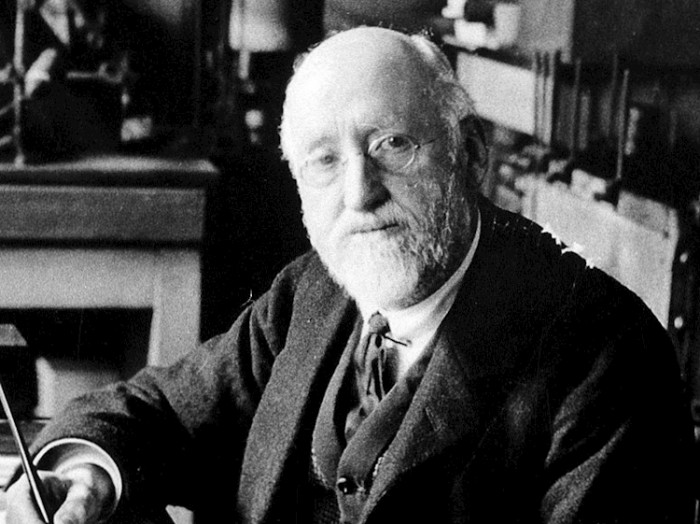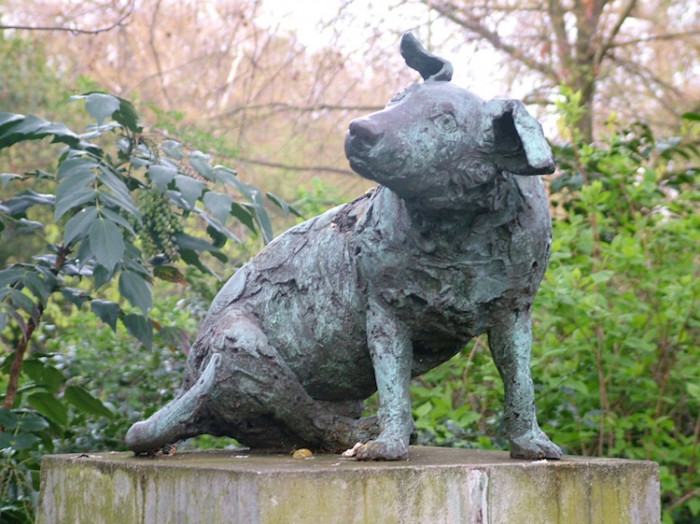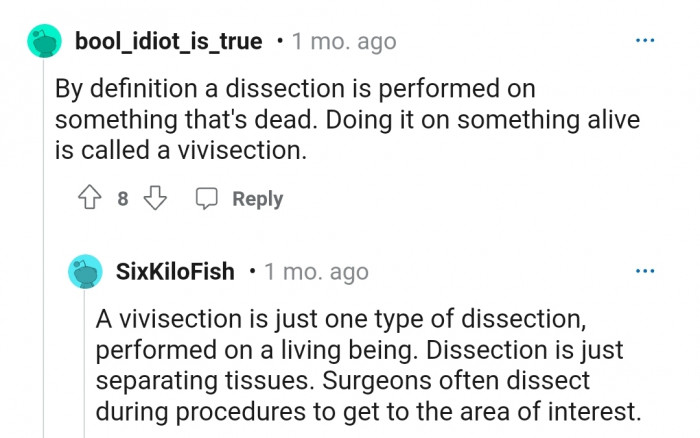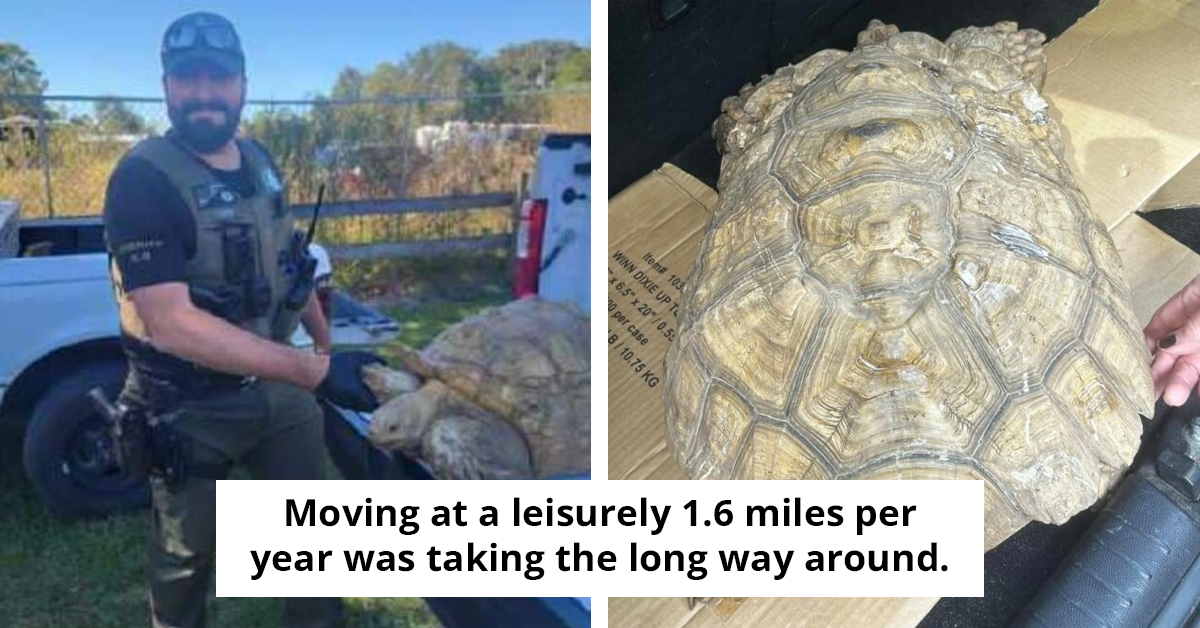Redditor Shares Horrible Historical Moment When A Dog Was Dissected Alive
Dogs and humans have shared an incredible bond for a very long time. How can they not when dogs are the best pets to have around?
However, this bond isn’t shared by all humans, which is why, throughout time, dogs, like other animals, have suffered some form of cruelty.
In the early periods, between 5000 BC and 500 AD, animals, including dogs, were extensively used for their muscle power to pull plows or sleds with blocks of limestone for construction.
Fast forward to the Middle Ages; people thought the dogs roaming the villages were spreading the plague, so they were hunted or burned.
Thankfully, there have also been people who have given their all to fight for these canines and advocated for better treatment. We found some of these individuals under the Today I Learned subreddit.
A Redditor shared that they had recently learned about a controversial and fiery event of the early 90s. This particular event involved Swedish feminists who protested against the dissection of a living brown terrier dog in the UK.
Via the link OP provided, viewers can read that the feminists had infiltrated the University of London medical lectures and fought against the medical students and the police. This incident aroused widespread controversy and divided the nation.
Although the person who performed the vivisection, William Bayliss, claimed that the dog had been adequately anesthetized, the feminists argued that the dog was conscious and struggling.
Bayliss, whose study on dogs contributed to the discovery of hormones, filed a libel lawsuit and won. But that was just the beginning of hostilities.
This is one story that you'd love to read. Scroll down for more details:
Brown Dog affair

From 1903 until 1910, Britain was immersed in the political issue known as the Brown Dog incident, which centered on the ethics of vivisection.
It included Swedish feminists infiltrating medical lectures at the University of London, heated clashes between medical students and the police, police protection for a statue of a dog, a libel trial held at the Royal Courts of Justice, and the establishment of a Royal Commission to thoroughly investigate the use of animals in scientific experiments.
This was one scandal that greatly polarized the nation.
Louise Lind of Hageby

One of the foremost animal activists involved in this movement was Louise Lind of Hageby. She enrolled at the London School of Medicine for Women in 1902 to advance her anti-vivisectionist education.
Dr William Bayliss

Understanding the Emotional Impact of Historical Trauma
The horrific act of dissecting a dog alive presents a disturbing reminder of humanity's darker past, often referred to as historical trauma. This concept refers to the psychological effects that traumatic events can have on collective communities, extending across generations.
Research published in the American Journal of Psychiatry highlights how exposure to historical atrocities can lead to profound emotional responses, including grief, anger, and even guilt, which can be passed down through family lines.
The Psychological Impact of Historical Trauma
The dissection of a dog alive reflects a profound instance of historical trauma that can resonate through generations. Research in trauma psychology indicates that such acts can create a collective sense of grief and outrage that persists in societal memory.
According to studies published in the Journal of Abnormal Psychology, communities often carry the emotional weight of such traumatic events, influencing behaviors and attitudes toward similar situations in the present.
This underscores the importance of acknowledging historical injustices to facilitate healing and promote empathy in society.
Allegations surfaced in March 1903 that William Bayliss, a physiologist at University College London, illegally vivisected a brown terrier dog in front of an audience of sixty medical students. Bayliss and his colleagues insisted that the dog was effectively sedated, but the Swedish activists insisted the animal was conscious and in pain.
The National Anti-Vivisection Society strongly opposed the practice, calling it cruel and illegal. Bayliss, whose studies on dogs led to the discovery of hormones, was outraged by the attack on his reputation and sued for libel, which he eventually won.
A protest in Trafalgar square against the removal of the statue

A bronze monument of the dog was commissioned by anti-vivisectionists and unveiled on the Latchmere Recreation Ground in Battersea in 1906. However, medical students were offended by its provocative plaque, which read: "Men and women of England, how long shall these things be?"
This led to frequent vandalism of the memorial and the necessity for 24-hour police protection against the "anti-doggers." The Brown Dog riots began on 10 December 1907, when hundreds of medical students marched through downtown London carrying effigies of the brown dog on sticks, clashing with suffragettes, trade unionists, and 300 police officers.
Battersea Council finally had enough of the back and forth, and in March 1910, they dispatched four employees escorted by 120 police officers to stealthily remove the monument at night. This was despite a 20,000-strong petition in favor of the statue. The council's blacksmith reportedly melted it down thereafter.
In 1985, Battersea Park welcomed a brand-new statue by Nicola Hicks.

A new statue of the brown dog, commissioned by anti-vivisection groups, was erected in Battersea Park in 1985.
On 6 September 2021, the 115th anniversary of when the original statue was unveiled, a new campaign was launched by author Paula S. Owen to recast the original statue.
A few Redditors had comments about the story.
This Redditor seems to be focused on the title

Furthermore, psychological studies suggest that such acts can lead to desensitization in societies, where the normalization of violence against animals or marginalized groups may occur. This desensitization can hinder empathy and moral reasoning, leading to a society that becomes increasingly numb to suffering.
Understanding this can help us recognize the importance of fostering empathy and compassion through education and community discussions about historical injustices.
Moreover, the psychological concept of moral injury becomes relevant here. Derived from research on veterans, moral injury refers to the psychological distress experienced when one's moral beliefs are violated.
In this case, the community's moral fabric may be torn by the act of dissection, leading to a collective sense of betrayal and sadness.
As individuals process these feelings, it's essential to provide safe spaces for dialogue and reflection to foster healing.
Someone has some words for people who harm innocent dogs

"Doing it on something alive is called a vivisection."

It’s always nice to learn something new, especially things about history. However, not all knowledge is pleasant.
This story will undoubtedly rub dog lovers the wrong way. One person in the comments section found it vile that a dog was dissected alive.
What do you think about the Brown Dog affair? Let us know your thoughts in the comments below!
Cultural Reflections on Animal Treatment
This tragic historical moment serves as a reflection of societal values regarding animal welfare and ethical treatment. A study by Dr. Hal Herzog, a psychologist known for his research on human-animal interactions, suggests that societal norms around animal treatment can shift dramatically over time.
Understanding these shifts is crucial for fostering a culture of empathy towards all living beings, which can be achieved through education and advocacy.
By examining past injustices, we can motivate current and future generations to prioritize the ethical treatment of animals.
To address the emotional fallout from such historical events, communities can implement educational initiatives that explore the ethics of animal treatment. Programs that engage individuals in discussions about empathy towards animals can promote a deeper understanding of the impacts of human actions.
Engaging youth through interactive activities can help instill values of compassion and ethical responsibility toward all living beings.
The Role of Empathy in Healing Historical Wounds
Empathy plays a vital role in healing the wounds inflicted by such traumatic events. Psychological research indicates that fostering empathy can lead to greater social cohesion and healing within communities.
Communities can benefit from organized discussions that allow individuals to express their feelings and thoughts about past atrocities, facilitating a collective healing process.
Moreover, these discussions can encourage a commitment to preventing similar injustices in the future.
Incorporating historical accounts of animal suffering into educational curricula can help raise awareness about ethical issues surrounding animal treatment. By teaching students about these historical events, we can encourage critical thinking about our relationships with animals and the moral implications of our choices.
This approach can lead to a more compassionate society that actively works to protect animal welfare.
The Importance of Acknowledging Historical Injustices
Addressing past injustices is essential for fostering reconciliation and understanding within communities. Psychological studies highlight that recognizing and discussing historical trauma can lead to collective empowerment and healing.
Communities can engage in memorializing such events, creating platforms for dialogue that honor the memories of those affected and promote ethical practices moving forward.
Doing so not only validates the experiences of the past but also strengthens community bonds in the present.
Lastly, promoting advocacy for animal rights can be a powerful response to historical injustices. Engaging communities in activism can lead to a greater awareness of contemporary issues surrounding animal welfare, reinforcing the lessons learned from the past.
By taking meaningful action, communities can transform historical trauma into a driving force for positive change, fostering a culture of compassion and empathy.
Psychological Analysis
This tragic historical moment reflects a significant moral breach that has lasting psychological consequences. As our in-house psychologist, I believe that recognizing and processing such events is crucial for community healing and fostering a culture of empathy towards all beings.
Analysis generated by AI
Analysis & Alternative Approaches
In summary, the horrific episode of a dog being dissected alive encapsulates a critical moment in history that requires acknowledgment and healing. By exploring the psychological implications of such trauma, we can foster empathy and promote the ethical treatment of animals.
Engaging in discussions and educational initiatives will not only honor the past but also pave the way for a more compassionate future.
The Role of Empathy in Understanding Cruelty
Empathy plays a crucial role in how we respond to acts of cruelty, such as the dissection of a dog. A clinical psychologist notes that cultivating empathy requires intentional practice and engagement with narratives that promote understanding and compassion.
Studies show that empathy can be enhanced through exposure to stories that humanize victims of cruelty, allowing individuals to connect emotionally with their experiences.
To combat desensitization and promote empathy, communities can engage in educational programs that focus on animal rights and welfare. Workshops that encourage discussions around empathy can lead to increased awareness and sensitivity toward the suffering of all beings.
By fostering a culture of compassion, we can encourage future generations to act against violence and cruelty, promoting a more humane society.
Fostering a Culture of Compassion
Creating a community that actively works against cruelty involves understanding the psychological principles behind empathy and moral responsibility. Research indicates that when individuals feel a sense of responsibility for the welfare of others, they are more likely to act in ways that promote kindness and prevent cruelty.
Community initiatives that focus on education about compassion and kindness can lead to profound cultural shifts, encouraging individuals to take action against injustices.
Practical strategies for fostering compassion include promoting volunteer opportunities related to animal welfare and incorporating discussions about empathy into educational curricula. These strategies can help cultivate a generation that values kindness and empathy as core societal principles.
Moreover, encouraging storytelling that highlights both the suffering and the resilience of animals can help build a narrative that promotes understanding and action against cruelty.
The Influence of Historical Narratives
Historical narratives shape our understanding of morality and justice. According to Dr. Alexandra Solomon, a relationship therapist, "The stories we share about our past can profoundly influence our present behaviors and ethical frameworks." When communities engage with their histories, they can identify patterns of cruelty and compassion, which can inform current attitudes and actions toward animals and marginalized groups.
Encouraging open dialogues about historical injustices, including animal cruelty, can serve as a catalyst for change, promoting a culture of reflection and responsibility. By understanding our past, we can actively work towards a more compassionate future.
Analysis & Alternative Approaches
In conclusion, the tragic dissection of a dog serves as a stark reminder of humanity's capacity for cruelty and the importance of empathy in our responses to such events. Understanding historical trauma and its psychological effects can guide us toward fostering a more compassionate society.
Through education and active engagement, we can break the cycle of desensitization and cultivate empathy, ultimately leading to a more humane world.



